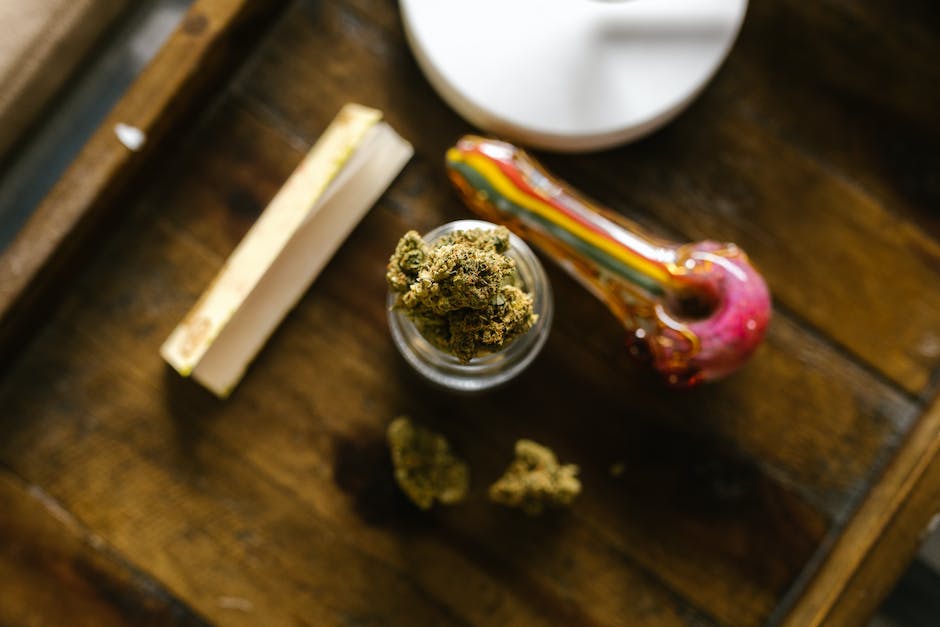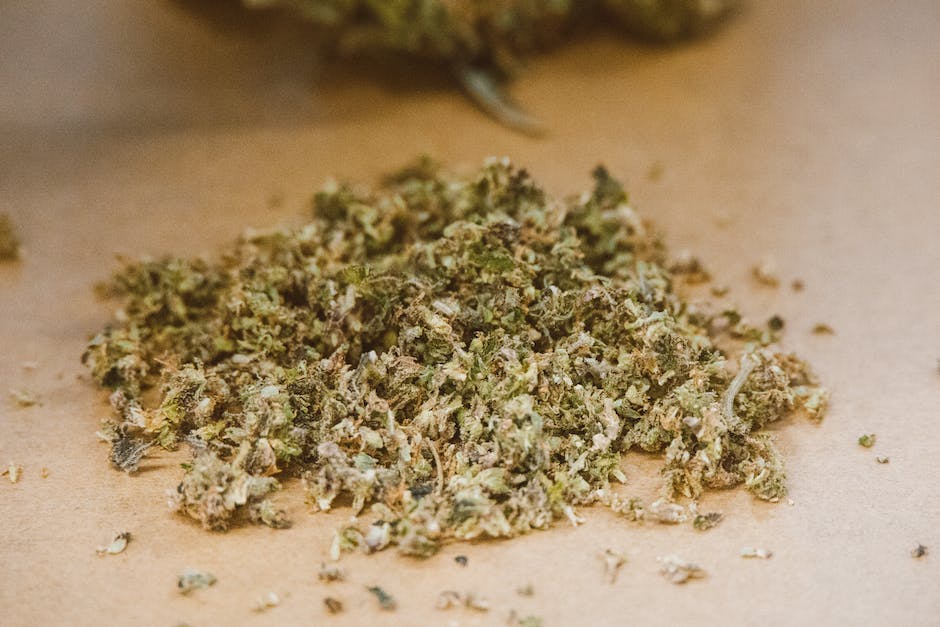Cannabis brands have been flourishing in recent years as the cannabis industry continues to gain legal and social acceptance across the globe. With the increasing competition in this industry, it has become imperative for cannabis brands to establish a strong online presence and engage with their target audience effectively.
One crucial aspect of establishing a successful online presence is search engine optimization (SEO). By optimizing the content on their websites and other online platforms, cannabis brands can ensure that their target audience can discover and access their products or services easily. However, due to the ever-evolving nature of SEO, staying ahead of the game requires constant adaptability and understanding of current best practices.
In this comprehensive SEO guide for cannabis brands, we will delve into the art of optimizing cannabis content and provide you with the essential strategies needed to enhance your online visibility. Whether you are an established cannabis brand or just starting out, this guide will equip you with the knowledge and tools to navigate the digital landscape effectively and drive traffic to your website.
So, whether you’re a cannabis producer, retailer, or infused product manufacturer, let’s embark on this journey to uncover the secrets of SEO and unlock the full potential of your cannabis brand in the vast, competitive online space.
Identifying the specific demographics and interests of cannabis consumers
When it comes to optimizing cannabis content for search engines, understanding the target audience plays a crucial role. Identifying the specific demographics and interests of cannabis consumers can help cannabis brands tailor their content strategy to resonate with their intended audience.
Demographics: To effectively target the right audience, cannabis brands must first determine the demographics of their target market. This includes factors such as age, gender, location, and income. For example, if a brand is targeting millennials in urban areas, their content may need to be more youthful and trendy in order to capture their attention. On the other hand, if the target audience is older individuals seeking medical cannabis, the content should focus more on therapeutic benefits and health-related topics.
Interests: Understanding the interests of cannabis consumers is equally important for optimizing content. By knowing their preferences, brands can create compelling content that meets their audience’s needs and desires. Some common interests of cannabis consumers may include cannabis strain reviews, cultivation tips, wellness and lifestyle content, cooking with cannabis, or cannabis-related events and festivals.
Market Research: Conducting thorough market research can provide valuable insights into the target audience’s behavior, preferences, and purchasing patterns. Brands should analyze data from industry reports, surveys, and social media analytics to gain a better understanding of who their audience is and what they are looking for. This information can help them create content that resonates with their target audience and improve their SEO efforts.
Personalization: Once cannabis brands have a clear picture of their target audience, they can personalize their content to appeal directly to them. By incorporating specific language, tone, and imagery that aligns with their audience’s interests and preferences, brands can create a more engaging and relatable experience. Personalization will not only increase the connection between the brand and the audience but also improve visibility in search engine rankings.
In conclusion, understanding the target audience is a crucial step in optimizing cannabis content for SEO. By identifying the demographics and interests of cannabis consumers, brands can tailor their content strategy to effectively engage their intended audience. By utilizing market research and personalization techniques, cannabis brands can optimize their SEO efforts and ultimately drive organic traffic to their website.
Exploring relevant keywords and phrases for optimizing cannabis content

Conducting keyword research is a crucial step in optimizing cannabis content for search engines. By exploring relevant keywords and phrases, cannabis brands can effectively target their desired audience and increase their online visibility. Here are some key considerations for conducting keyword research:
1. Identifying industry-specific keywords: Start by understanding the terminology used within the cannabis industry. Identify keywords and phrases that are commonly used by your target audience when searching for cannabis-related information or products. This could include terms like “medical cannabis,” “recreational marijuana,” “CBD products,” or “cannabis dispensary.”
2. Using keyword research tools: Utilize keyword research tools, such as Google Keyword Planner or SEMrush, to identify the popularity and competition level of various keywords. These tools can provide insights into search volume, trends, and related keywords, helping you refine your target keyword list.
3. Analyzing competitor keywords: Analyze the keywords used by your competitors’ websites or content to gain insights into their SEO strategy. This can help you identify any gaps or opportunities in your own keyword targeting.
4. Long-tail keywords: Consider incorporating long-tail keywords into your content strategy. These are longer, more specific keyword phrases that have less competition but can still attract highly targeted and relevant traffic. For example, instead of targeting the broad keyword “cannabis products,” you could focus on a long-tail keyword like “organic CBD oil for sleep.”
5. Localize your keywords: If your cannabis brand operates in specific geographic areas, include location-specific keywords to optimize for local search. This could include adding city or state names to your keywords or incorporating local landmarks or events.
6. Search intent analysis: Understanding the intent behind specific keyword searches can help you better optimize your content. Are users looking for informational content, product reviews, or purchasing options? Tailoring your content to match the search intent can increase your chances of ranking higher and attracting engaged visitors.
Remember to regularly revisit and update your keyword research to stay aligned with evolving industry trends and changing user search behaviors. By conducting thorough keyword research, cannabis brands can optimize their content to reach their target audience and boost their online visibility and organic traffic.
Tips for developing engaging and cannabis-friendly content

Creating compelling and informative content:
When it comes to developing content for your cannabis brand, it is essential to create compelling and informative content that engages your audience while aligning with your brand’s professional image. Here are some tips to help you develop engaging and user-friendly content:
1. Define your target audience: Before creating any content, it is crucial to understand your target audience and their needs. Research their interests, demographics, and preferences to tailor your content accordingly. This will ensure that your content resonates with your audience on a deeper level.
2. Craft an attention-grabbing headline: The headline is the first thing that your audience will see, so make sure it grabs their attention and entices them to read further. Use powerful words and phrases that spark curiosity while accurately representing the content of your article.
3. Provide valuable and accurate information: Your content should be factually accurate, well-researched, and add value to your readers’ lives. Focus on educating and informing your audience about the latest developments, trends, and insights within the cannabis industry. By providing reliable information, you position your brand as a trusted authority in the field.
4. Use visual elements wisely: Incorporating visually appealing elements such as images, infographics, or videos can enhance the overall user experience. Use high-quality visuals that are relevant to your content and align with your brand’s professional image. Visuals not only break up long blocks of text but also make your content more engaging and shareable.
5. Make it easy to read and navigate: Keep your content concise, organized, and easy to skim. Break up your text into smaller paragraphs, use subheadings, and bullet points to make the information more digestible. Utilize white space effectively, ensuring a clean and clutter-free layout. Remember, your readers are likely to skim through the content, so make it easy for them to find the information they are looking for.
6. Incorporate SEO best practices: To optimize your content for search engines, conduct thorough keyword research and integrate relevant keywords naturally throughout your content. Use descriptive meta-tags, title tags, and alt tags for images to improve your chances of ranking higher in search engine results. However, make sure to avoid keyword stuffing, as it may negatively impact the readability and overall quality of your content.
7. Encourage audience interaction: Engage with your audience by inviting them to leave comments, ask questions, or share their experiences. Respond to their comments and feedback promptly, fostering a sense of community and building trust with your readers.
Remember, content creation is an ongoing process. Continuously analyze your content’s performance, consider feedback from your audience, and adapt your strategy accordingly. By creating compelling and informative content, you can establish your cannabis brand as a thought leader and foster meaningful connections with your target audience.
Optimizing meta tags and descriptions

Meta tags and descriptions play a crucial role in optimizing your cannabis brand’s online presence. These aspects of your webpage not only impact its visibility on search engine result pages (SERPs) but also influence whether users click on your website or a competitor’s. To ensure your cannabis content ranks high and attracts potential customers, here are some guidelines for optimizing title tags, meta descriptions, and URLs:
1. Title Tags:
The title tag, also known as the page title or HTML title element, is displayed as the clickable headline on search engine results. To optimize your title tags for search engines and users, keep the following tips in mind:
– Keep it concise: Limit your title tag to 50-60 characters to ensure it appears fully on SERPs. Be concise but descriptive, including important keywords that reflect the content of your page.
– Unique and relevant: Make each title tag unique for every webpage. Incorporate relevant keywords that accurately represent the information on that specific page. Avoid using generic titles that don’t provide any insight into the content.
2. Meta Descriptions:
The meta description provides a brief summary of the webpage’s content beneath the title tag on SERPs. Although search engines don’t use meta descriptions for ranking purposes, they greatly influence click-through rates. Follow these tips when optimizing your meta descriptions:
– Length and clarity: Keep your meta descriptions within 150-160 characters to ensure they are fully displayed. Craft concise, compelling descriptions that accurately summarize the content, enticing users to click.
– Include relevant keywords: Incorporate relevant keywords naturally within the meta description, as search engines often highlight these keywords in the search results. However, avoid excessive keyword stuffing as it can negatively impact user experience.
3. URL Optimization:
While not directly visible on SERPs, optimizing your URLs contributes to a better user experience and helps search engines understand the context of your cannabis-related content. Consider these guidelines when optimizing your URLs:
– Keep it readable: Craft clean, easy-to-read URLs that provide users and search engines with a clear indication of the page’s content. Avoid using unnecessary numbers, symbols, or special characters.
– Include relevant keywords: Incorporate relevant keywords into your URLs, but keep them concise and natural. This helps search engines understand the topic of the page and improves the likelihood of your content being relevant to user searches.
Optimizing your cannabis brand’s meta tags, descriptions, and URLs helps to enhance its visibility, attract more organic traffic, and improve the overall user experience. By accurately representing your content and incorporating relevant keywords, you increase the chances of ranking higher on SERPs and enticing users to click through to your website.
Importance of visual elements and multimedia in cannabis content

High-quality images and multimedia play a crucial role in optimizing the content of cannabis brands. In today’s digital age, where attention spans are shorter than ever, captivating visuals are essential to grab the audience’s attention and keep them engaged.
When it comes to cannabis content, it is especially important to incorporate visually appealing elements. Not only can high-quality images help to convey the look and feel of different cannabis products, but they can also showcase the unique aspects of the brand. Whether it’s showcasing a cannabis strain with vibrant colors, capturing the intricate details of a cannabis-infused product, or highlighting the experience of using cannabis through lifestyle shots, images are an effective way to evoke emotions and create a lasting impression.
In addition to images, multimedia elements such as videos and infographics can be incredibly powerful tools for cannabis brands. Videos provide an immersive experience, allowing brands to tell a story and educate their audience in an engaging manner. Whether it’s a behind-the-scenes look at the cultivation process, a testimonial from a satisfied customer, or a tutorial on how to use a specific cannabis product, videos can help establish credibility and build trust with the audience.
Infographics, on the other hand, are an excellent way to present complex information in a visually appealing and easy-to-understand format. From explaining the different strains and their effects to breaking down the chemical composition of cannabinoids, infographics can help simplify complex concepts and make them more accessible to a wide range of readers. They not only enhance the readability of cannabis content but also make it shareable across various platforms, thereby increasing brand exposure.
When incorporating visuals and multimedia into cannabis content, it is crucial to ensure that they align with the brand’s professional image. High-resolution images, well-edited videos, and well-designed infographics are essential to maintaining a polished and professional appearance. Furthermore, optimizing these visual elements with relevant keywords and metadata can significantly improve the brand’s search engine rankings and overall visibility.
In conclusion, utilizing high-quality images and multimedia is paramount in optimizing cannabis content for maximum impact. They have the power to captivate the audience, convey the brand’s unique identity, and simplify complex information. By incorporating visually appealing elements into their content strategy, cannabis brands can enhance their online presence, establish credibility, and cultivate a loyal following.
Strategies for linking to relevant internal and external sources

When it comes to optimizing your cannabis content for search engines, implementing effective linking strategies plays a vital role. Both internal and external linking strategies are essential for enhancing the visibility and credibility of your cannabis brand. By linking to relevant internal and external sources, you can provide valuable information to your readers while also signaling to search engines the relevance and authority of your content.
Implementing internal linking strategies involves placing links within your website’s content that redirect users to other relevant pages on your site. This strategy not only enables visitors to navigate seamlessly through your website but also helps search engine crawlers discover and index your pages more effectively. When incorporating internal links, aim to use relevant anchor text that clearly describes the topic or destination of the linked page. Additionally, consider implementing a hierarchical structure to your internal linking, prioritizing the most important or relevant pages to receive the most internal link juice.
External linking, on the other hand, involves linking to reputable and authoritative sources outside of your website. By including external links to credible websites and sources, you not only provide additional value to your readers but also demonstrate to search engines that your content is well-researched and trustworthy. When choosing external sources to link to, prioritize reliable publications, industry leaders, and scientific studies related to the cannabis industry. This not only helps establish your own credibility but also enhances the overall user experience by providing readers with supplementary information from trusted sources.
It is essential to strike a balance between internal and external linking in order to optimize your cannabis content effectively. Focus on incorporating internal links throughout your website while ensuring they are relevant and valuable to the user. Additionally, complement your content with external links to reliable sources that support and enhance the information you provide. By thoughtfully implementing internal and external linking strategies, you can improve the visibility, authority, and user experience of your cannabis brand’s content, ultimately driving organic traffic and engagement.
How to effectively use social media platforms and influencers in cannabis SEO

As cannabis brands navigate the digital landscape, leveraging social media platforms and influencers can play a crucial role in optimizing their online presence. Incorporating these strategies into your cannabis SEO efforts can help boost visibility, drive traffic to your website, and ultimately increase brand awareness. Here’s a guide on effectively using social media platforms and influencers to optimize your cannabis content:
1. Choose the Right Social Media Platforms: With a plethora of social media platforms available, it’s important to identify the ones that align with your target audience and brand values. Platforms like Instagram, Twitter, and Facebook are popular among cannabis enthusiasts and provide ample opportunities for engagement and sharing content. Conduct market research to understand which platforms your target demographic prefers and focus your efforts on those channels.
2. Establish a Consistent Brand Voice: Consistency is key when it comes to social media branding. Develop a unique brand voice that aligns with your company’s mission, values, and audience expectations. It is important to strike a balance between being informative and engaging. Ensure that your content is relevant, valuable, and resonates with your target audience to establish a loyal following.
3. Engage with Your Audience: Social media is all about interaction. Engaging with your audience through comments, direct messages, and sharing user-generated content fosters a sense of community and builds trust. Respond to comments, answer questions, and encourage conversations to create a positive and interactive social media presence. This not only strengthens your relationship with your audience but also boosts your brand’s visibility through increased engagement.
4. Collaborate with Influencers: Influencer marketing has become a powerful tool for promoting cannabis brands. Seek out influencers who align with your brand values and have a genuine and engaged following. Collaborate with them to create sponsored posts, product reviews, or endorsements to amplify your brand reach. Remember to choose influencers who are compliant with local regulations governing cannabis advertising to ensure legality and brand safety.
5. Leverage Hashtags and Trending Topics: Hashtags are a great way to expand your content’s visibility on social media platforms. Conduct keyword research to identify popular hashtags relevant to the cannabis industry and your brand. Incorporate these hashtags into your posts to connect with a wider audience and increase the chances of your content being discovered. Additionally, monitor trending topics and participate in relevant conversations to boost your brand’s visibility and reputation.
6. Monitor Analytics and Refine Strategies: Regularly track social media metrics such as reach, engagement, and click-through rates to measure the effectiveness of your efforts. Use analytics tools provided by each platform or invest in social media management tools to gain insights into audience demographics, peak posting times, and content performance. This data can inform you of what content resonates best with your audience, helping you refine your social media strategies for better SEO results.
By leveraging social media platforms and influencers effectively, cannabis brands can optimize their online presence and enhance their SEO efforts. Remember to engage with your audience, create valuable content, collaborate with trusted influencers, and use analytics to continuously refine your approach. With a well-executed social media strategy, your cannabis brand will be well-positioned to rise above the competition and drive long-term success.
Monitoring and analyzing website performance

Monitoring and analyzing website performance is a crucial step for cannabis brands looking to optimize their online presence and attract more visitors. By using various tools and techniques to track website metrics, businesses can gain valuable insights into user behavior, identify areas of improvement, and refine their SEO strategies. Here are some effective methods that cannabis brands can employ:
1. Google Analytics: Google Analytics is a powerful tool that provides detailed information about website traffic, including the number of visitors, the sources of traffic, and user behavior on the site. By monitoring key metrics such as the bounce rate, average session duration, and conversion rates, cannabis brands can assess the effectiveness of their website and make informed decisions regarding content optimization.
2. Keyword Performance: Tracking the performance of keywords is essential for cannabis brands striving to improve their SEO rankings. By using tools like Google Search Console or third-party keyword tracking software, businesses can monitor their keyword rankings, identify high-performing keywords, and discover new opportunities for optimization. Monitoring keyword performance allows cannabis brands to adjust their content strategy, ensuring their website aligns with trending keywords and user search habits.
3. Site Speed and Mobile Responsiveness: Website speed and mobile responsiveness are vital factors that impact user experience and search rankings. Tools like Google PageSpeed Insights can provide cannabis brands with actionable insights on how to optimize their website for faster loading times. Additionally, ensuring that the website is mobile-friendly is essential in today’s mobile-centric world. Brands can use tools like Google’s Mobile-Friendly Test to check the mobile responsiveness of their website and make necessary improvements.
4. User Engagement and Conversion Rates: Monitoring user engagement metrics like page views, average time on page, and social shares can provide cannabis brands with insights into the effectiveness of their content. This data helps businesses understand which topics resonate better with their audience and can guide future content creation efforts. Similarly, tracking conversion rates through tools like Google Analytics allows cannabis brands to identify bottlenecks in their conversion funnels and take steps to improve conversions.
5. Competitor Analysis: Monitoring website metrics of competitors offers valuable insights into industry trends, content strategies, and potential areas for improvement. By using tools like SEMrush or Moz, cannabis brands can analyze their competitors’ keywords, backlink profiles, and content performance. This information can help businesses identify gaps in their own strategies and guide their optimization efforts to gain a competitive edge.
In conclusion, monitoring and analyzing website performance is essential for cannabis brands looking to optimize their online presence. By utilizing tools like Google Analytics, tracking keyword performance, focusing on site speed and mobile responsiveness, monitoring user engagement and conversion rates, and conducting competitor analysis, businesses can gather valuable insights to refine their SEO strategies and improve their overall website performance.

